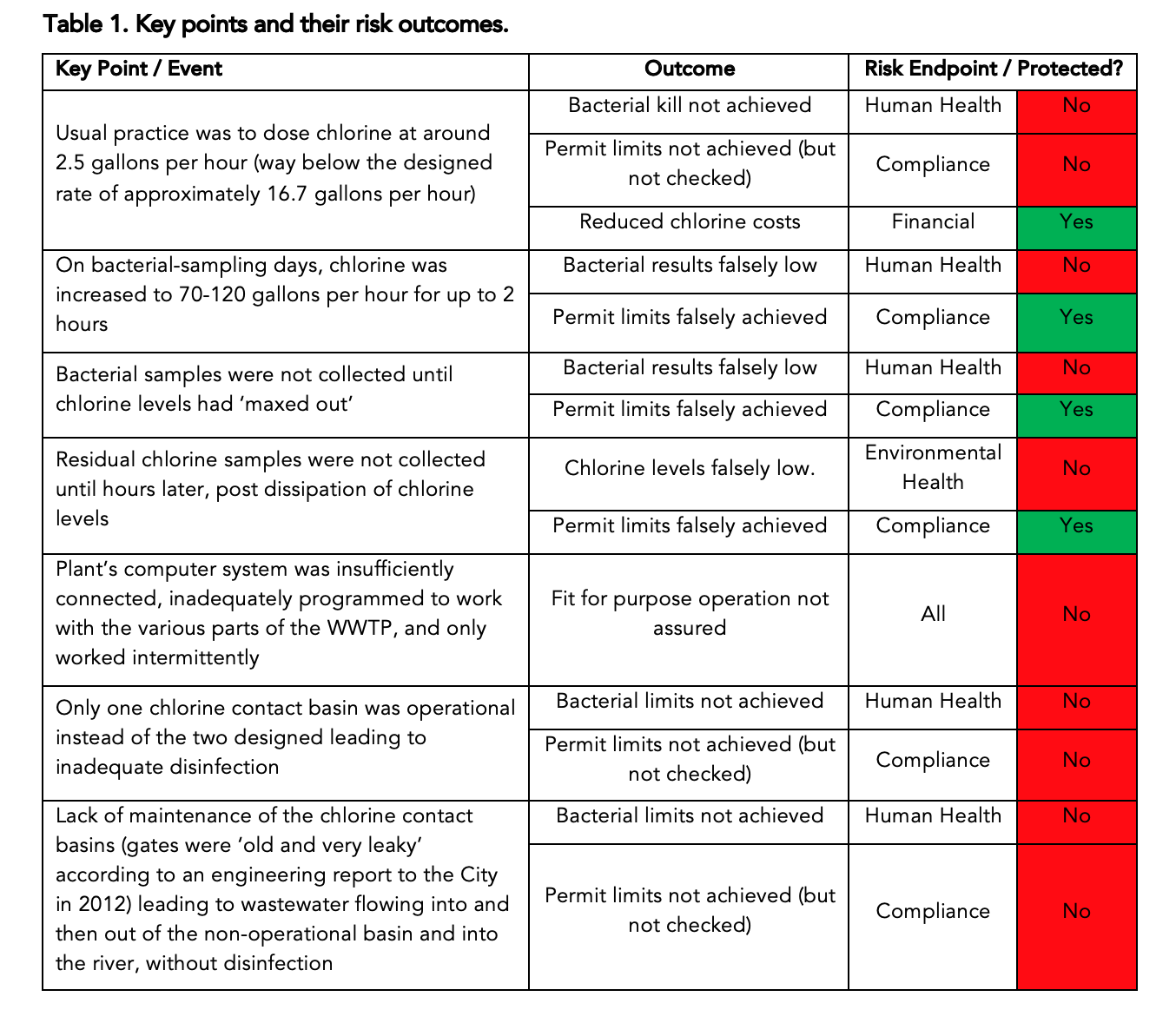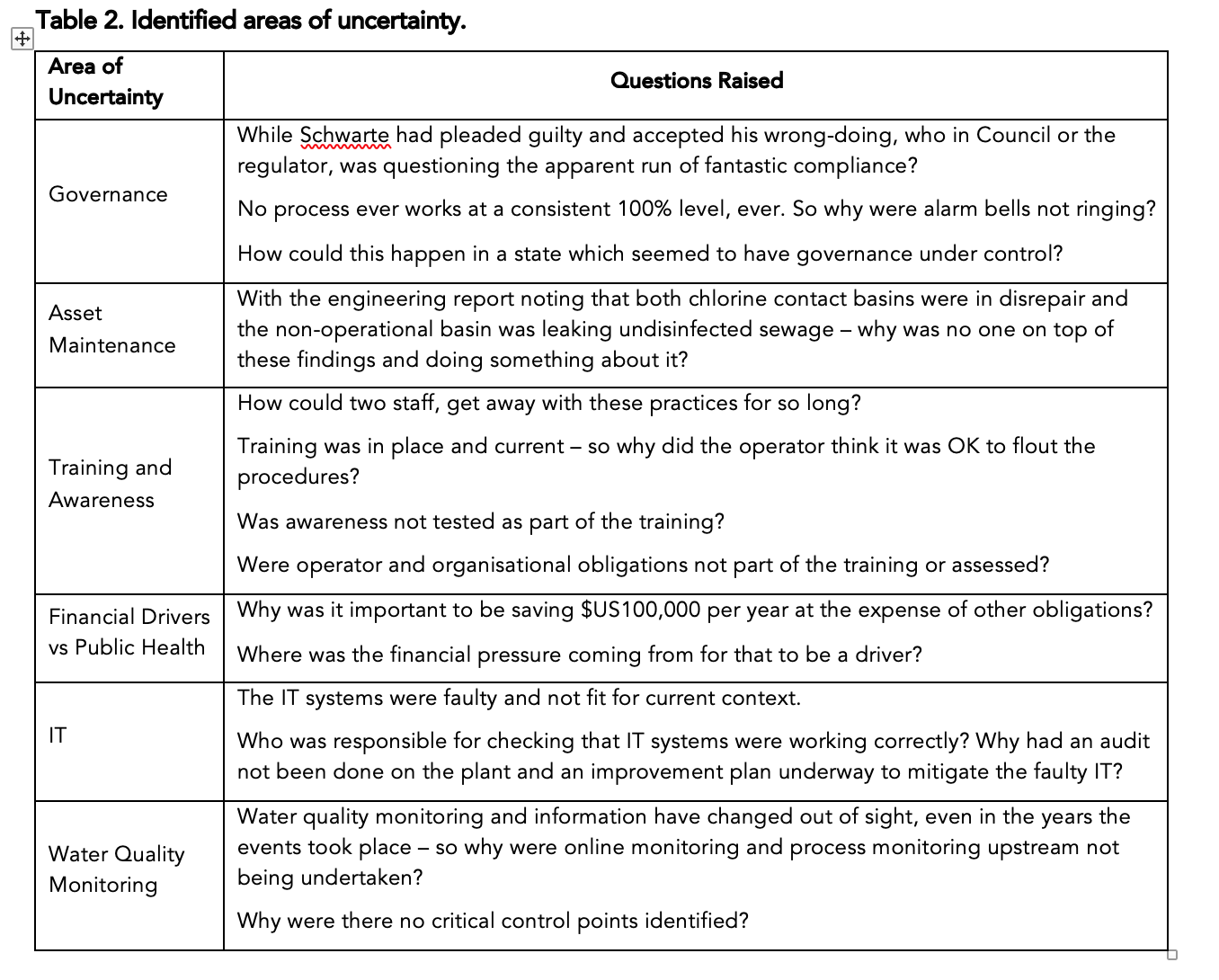 As the world grapples with the issues of future water security and dwindling supplies of fresh water, more and more organisations and communities are scanning more broadly and reviewing how they can meet their future water needs. There is now an increased risk appetite for considering all water source options for drinking water production – beyond the traditional surface and ground water sources. In the water industry, we talk about the multiple barrier approach, that is, if one barrier fails, there is another in place as insurance.
As the world grapples with the issues of future water security and dwindling supplies of fresh water, more and more organisations and communities are scanning more broadly and reviewing how they can meet their future water needs. There is now an increased risk appetite for considering all water source options for drinking water production – beyond the traditional surface and ground water sources. In the water industry, we talk about the multiple barrier approach, that is, if one barrier fails, there is another in place as insurance.
The multiple barrier approach is well understood as far as treatment is concerned, from source to end use. But have you thought about multiple barriers in terms of supporting risk management options like decision-making, monitoring, reporting, document control, record keeping, training and awareness – as promoted by ISO 31000? If we are going to assure the consistent fitness for purpose of purified recycled water for drinking, all of the multiple barriers available to the water manufacturer, need to be explored and supported – staff, management, elected officials and directors all need to be water cycle risk literate. In this article, a recent case study relating to negligence and awareness in sewage management is reviewed. Areas of uncertainty for achieving urban water risk literacy and governance, are put forward.
The Case Study[1]
The Location
Sioux City the fourth largest city in Iowa (population 82,684 at the 2010 census[2]) is located in the north-western part of the state of Iowa (USA), near what is known as the navigational head of the Missouri River.
Sioux City is served by a 28.73 million gallon per day regional wastewater plant, originally constructed in 196. The plant serves five communities from three different states, including Sioux City and Sergeant Bluff (Iowa), South Sioux City (Nebraska) and North Sioux City and Dakota Dunes (South Dakota).
Governance
The plant is owned and operated by the City of Sioux City Council (Council). The plant discharges into the Missouri River under a permit. Effluent is required to be treated before release, as a public health risk management measure for the heavy recreational use in the river.
Effluent discharged must meet National Pollutant Discharge Elimination System (NDPES) permit levels and Clean Water Act obligations. The plant operated under Permit # 9778001.[3] The Iowa Department of Natural Resources (IDNR) is responsible for issuing discharge permits under the NPDES permit program.
The permit also imposed a number of conditions on the owner of the plant, City of Sioux City (and holder of the permit) including:
- Disinfection of the effluent during a disinfection season between 15 March and 15 November, to mitigate the risk of recreational illness, from ingestion of human pathogens, from recreational uses of the river. Liquid chlorine was used as the disinfecting agent.
- Monitoring of the effluent required both microbial and chemical analysis to ensure that faecal coliform and coli levels are met, as well as chlorine levels to ensure that public health environmental risk endpoints are protected.
- Adherence to strict monitoring frequencies during the disinfection season, at the outfall point. Plant operators were required to take samples according to stipulated frequencies, and have them analysed by standard methods, specified in the permit.
- Reporting of all data including calculated results needed to determine compliance with the limitations contained in this permit, on an approved form, on a monthly basis or, for any noncompliance that may endanger human health or the environment – verbal notification with 24 hours of becoming aware of the circumstance followed up by a written report (with conditions), within 5 days.
- All facilities and control systems to be operated as efficiently as possible and maintained in good working order.
- A sufficient number of staff, adequately trained and knowledgeable in the operation of the facility to be retained at all times and adequate laboratory controls and appropriate quality assurance procedures to be provided to maintain compliance with the conditions of the permit.
- All reasonable steps to be taken to minimize or prevent any discharge in violation of the permit which has a reasonable likelihood of adversely affecting human health or the environment.
- A duty to comply with all conditions of the permit.
As well as administering and checking compliance with the permit, the Water Supply Operations section of the IDNR is responsible for certifying public water supply treatment and distribution operators and wastewater and lagoon operators[4] (Chapter 81 of the Iowa Administrative Code):
“The purpose of the OpCert program is to insure that water and wastewater operators have sufficient knowledge and experience to properly operate the system, and in turn protect human health and safety and the environment.”
The Event
Patrick Schwarte was employed at the Sioux City Wastewater Treatment Plant for over 30 years, most recently as a shift supervisor. Schwarte had maintained a wastewater treatment certification from IDNR and had significant training and experience in municipal wastewater treatment. As noted above, the permit holder was required to comply with all requirements of the permit, including treatment and monitoring requirements.
As a result of a tip-off about the practices, the regulator investigated. It transpired that during the period July 2012 to June 2015, Schwarte (and his direct supervisor, Niday) was involved in manipulating the system by, early in the day when bacterial sampling was to be undertaken, instructing those first shift operations to increase the chlorine dose. After appropriate mixing (~an hour or so), those same operators were instructed to use hand-held colorimeters to test the level of chlorine, with a sample of the wastewater only being collected, once the chlorine level had reached a maximum. A similar practice of waiting for the chlorine to dissipate was followed, before operators were instructed to collect the residual chlorine samples.
As a result of these practices, the plant had no reported exceedances of it permit limits for bacteria or residual chlorine, post July 2012.
In addition, the plant was found not maintained or in good working order. A summary of events and key points relating to this case study are shown in Table 1.
The Fallout
In 2019, Schwarte pleaded guilty to one count of conspiracy and one count of knowingly falsifying, tampering with, and rendering inaccurate a monitoring device or method required to be maintained under the Clean Water Act.
The plant was also not operated or maintained in good working order, which also violated its permit.
In 2020, Schwarte was sentenced to two years of probation, including two months of home confinement, and fined $5,000.
Council was not found guilty.
Summary
ISO 31000 defines risk as the effect of uncertainty on objectives. There are lots of facts about this case that are uncertain – and perhaps they are in other materials that have not yet been viewed – however, it is unclear why other parties were not found wanting. There is therefore a range of questions that arise, and which are important for anyone thinking of embarking on a more diverse range of drinking water source options (Table 2).
So, how certain are you of the risk literacy in your own organisation? Is your drinking water quality at risk? If you are thinking about increasing the range of sources as part of your water security strategy – it’s important to take a long hard look at your current context, make sure you have the basics well under control, and ensure that the options chosen, meet the needs and context of your community and the capacity of your organisation.
Need help? Risk Edge has a vast experience in water cycle governance and training. Learn more here.
First published: https://www.riskedge.com.au/all-options-on-the-table-is-your-organisation-risk-ready/
Dr Annette Davison
Annette is the founder and Principal Risk Analyst of Risk Edge Pty Ltd (a risk assessment and management and auditing specialist company). Annette is also a co-founder of D2K Information Pty Ltd (an end to end water quality monitoring hardware, water quality intelligence software and solutions company). Annette’s background is in environmental and public health microbiology, water management system risk assessment and auditing and local government and environmental law. Annette has over 30 years’ experience nationally and internationally in the environment and water industries including lead-authoring the World Health Organisation’s first Water Safety Plan Manual. Annette is an Exemplar Global-qualified Lead Auditor and IPART (NSW) Lead Auditor in a number of categories.
[1] https://en.wikipedia.org/wiki/Sioux_City,_Iowa; https://www.sioux-city.org/government/departments-q-to-z/waste-water-treatment; https://siouxcityjournal.com/news/local/crime-and-courts/ex-sioux-city-treatment-plant-superintendent-pleads-guilty-to-falsifying-tests/article_34798af1-0c7c-5fc7-bd5f-510cc2bcc8b3.html?utm_source=dlvr.it&utm_medium=twitter; https://www.justice.gov/usao-ndia/pr/former-sioux-city-wastewater-treatment-plant-shift-supervisor-sentenced-violating-clean
[2] https://www.census.gov/quickfacts/siouxcitycityiowa
[3] https://programs.iowadnr.gov/wwpie/Admin/PermitDetails?permitID=4677
[4]https://www.iowadnr.gov/environmental-protection/water-quality/certification/water-wastewater-operators

